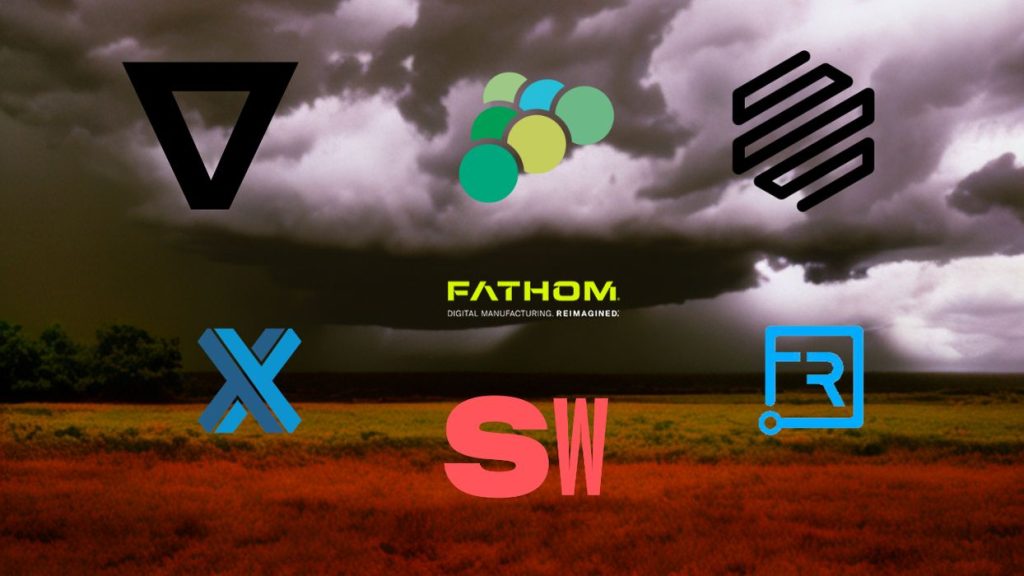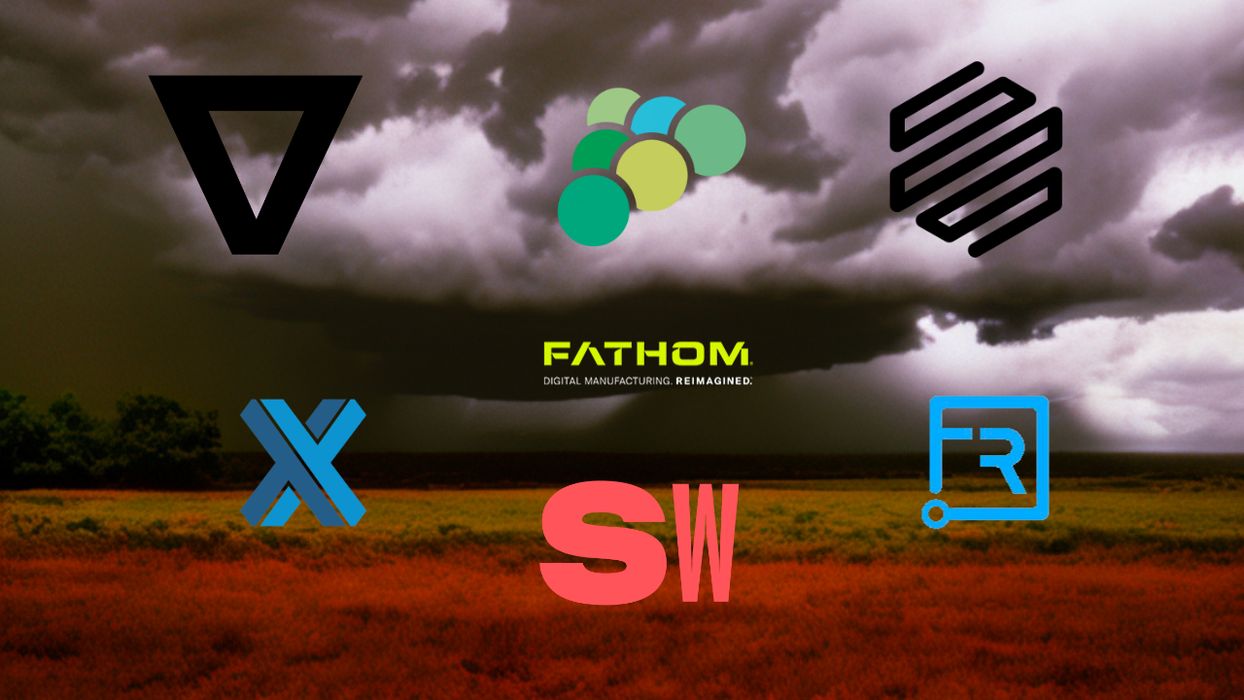
I’ve been reviewing our weekly 3D print company valuation data, and have some interesting results to report.
We began reporting the valuations (the “cost to buy the whole company”) back in March of 2021. Each week we publish a report on that week’s changes through a leaderboard. At the beginning we tracked only seven companies, but now we track 25, although some have literally disappeared.
Note that we can only calculate the valuation of publicly traded companies, because they are required to post financial information, whereas privately held companies do not. We just can’t know about those private companies, like Formlabs, Carbon, EOS, or several others. Our list also excludes giant companies of which 3D printing is only a sideline, like HP and Xerox, because they’d mess up the chart terribly and their shifts may have nothing to do with 3D printing.
As last year ended I reviewed the data up to the end of December 2022 and found some interesting results.
One result is an animation of the entire sequence of valuations for the past 21 months, and it’s fascinating to watch:
You can see new companies appear when they entered the market and became tradable, and you can see when others abruptly disappear when they failed or were acquired.
The volatility of the market is tremendous, as you can see notable shifts from week to week. Some companies, like Velo3D, bop up and down the chart like a yo-yo, a phenomenon we’re still at a loss to explain.
Another very notable observation is that the animation presents a total valuation for the leaderboard during each week. At the beginning of the sequence the total is something over US$20B, quite a large number. But by December 2022 the total — with more companies on the leaderboard — had degenerated down to under US$7B.
That’s a substantial loss of value, more than the stock market in general. The reason for this is that tech stocks, and 3D printing companies in particular, are often still viewed with suspicion by some investors. It’s viewed as a new technology, even though it’s been around for decades in one form or another.
You could say, however, that many of the companies on the leaderboard are new.
That got me thinking: during this period there were a number of companies that entered the market by “going public”. On a specific day, each of these companies suddenly appeared on a stock exchange and their shares were traded. Investor interest caused the value of the stock — and therefore the entire company — to rise and fall.
On opening day, however, many investors sunk money into these new entrants, in hopes that they would rise and create a huge payout later.
But did they? Let’s take a look at the seven companies that entered the market during our observation period, Xometry, Freemelt, Velo3D, FATHOM, Markforged, Shapeways and Fast Radius.
Note: all values are in US$ millions.
Xometry Valuation
Xometry is a manufacturing network that makes extensive use of 3D print technology. After their entry, they’ve frequently been seen in the top position on the valuation leaderboard.
- Opening Week Valuation: 2979
- Maximum Week Valuation: 3475
- Minimum Week Valuation: 1386
- December 2022 Valuation: 1440
- Opening Week to Current change: -52%
Freemelt Valuation
Freemelt is a European producer of a metal 3D printing system that is targeted at experimenters and laboratories working on new materials.
- Opening Week Valuation: 95
- Maximum Week Valuation: 106
- Minimum Week Valuation: 22
- December 2022 Valuation: 25
- Opening Week to Current change: -74%
Velo3D Valuation
Velo3D is the manufacturer of a revolutionary metal 3D printing system that requires little or no support, enabling the production of complex designs, often used in the aerospace industry.
- Opening Week Valuation: 1650
- Maximum Week Valuation: 2240
- Minimum Week Valuation: 248
- December 2022 Valuation: 337
- Opening Week to Current change: -80%
FATHOM Valuation
FATHOM is a manufacturing service that extensively uses 3D printing, and is an agglomeration of a number of smaller manufacturing services.
- Opening Week Valuation: 1109
- Maximum Week Valuation: 1392
- Minimum Week Valuation: 181
- December 2022 Valuation: 181
- Opening Week to Current change: -84%
Markforged Valuation
Markforged manufactures both continuous carbon fiber polymer 3D printers as well as inexpensive metal 3D printers.
- Opening Week Valuation: 1946
- Maximum Week Valuation: 1967
- Minimum Week Valuation: 158
- December 2022 Valuation: 224
- Opening Week to Current change: -88%
Shapeways Valuation
Shapeways was the original consumer oriented 3D print service, but in recent years they’ve shifted into professional and industrial markets.
- Opening Week Valuation: 426
- Maximum Week Valuation: 564
- Minimum Week Valuation: 26
- December 2022 Valuation: 27
- Opening Week to Current change: -94%
Fast Radius Valuation
Fast Radius was a manufacturing service making extensive use of 3D printing.
- Opening Week Valuation: 36
- Maximum Week Valuation: 66
- Minimum Week Valuation: 12
- December 2022 Valuation: 0
- Opening Week to Current change: -100%
Valuation Analysis
I think you can see a strong pattern here. Each and every one of these newly public companies has suffered enormous losses in valuation during their short public existence.
One company, Fast Radius, has actually disappeared, hence their current valuation of zero. The company was unable to make a go of it, leaving their initial investors disappointed.
Even the leader of this list, Xometry, suffered a significant loss in value since their opening day, losing almost half their value.
In hindsight, I would not want to be one of those initial investors in any of these companies.
While the investors languish, it might have actually been a good time for the companies themselves: had they gone public later, they might have received less investment. Indeed, there were several other companies I expected to enter the market, but they have all deferred doing so, no doubt waiting for the market to rise again.
To be fair, the entire market has notably dropped over this period. To see how this affected the seven companies above, I computed the total drop in value over the period for the entire leaderboard, and found it to be 66%. As you can imagine, most companies on the leaderboard have had severely depressed valuations.
Aside from Xometry, these companies still were somewhat worse than the leaderboard average.
Nevertheless, this is simply a point in time analysis and we will no doubt see a ton of volatility in weeks to come.

